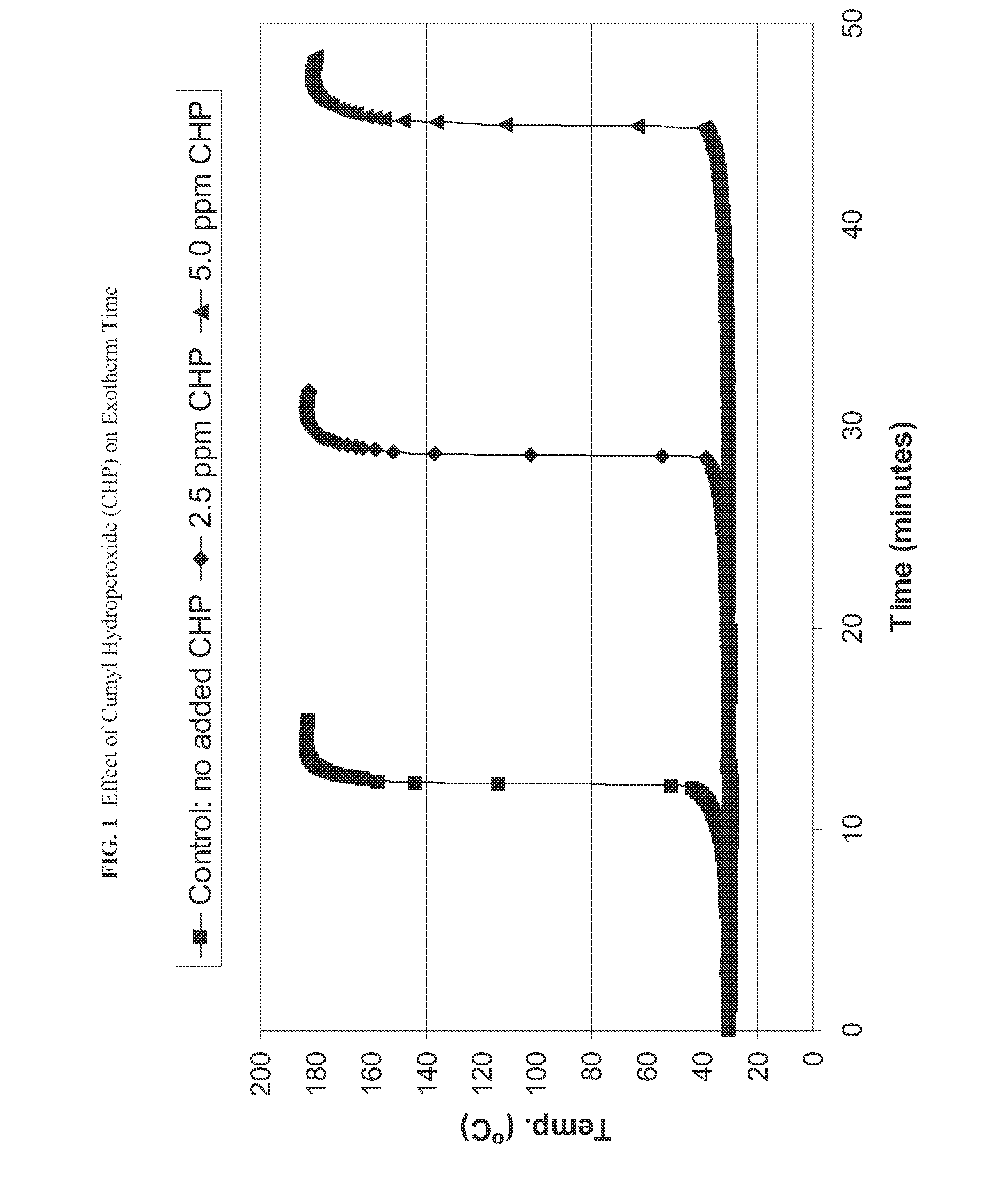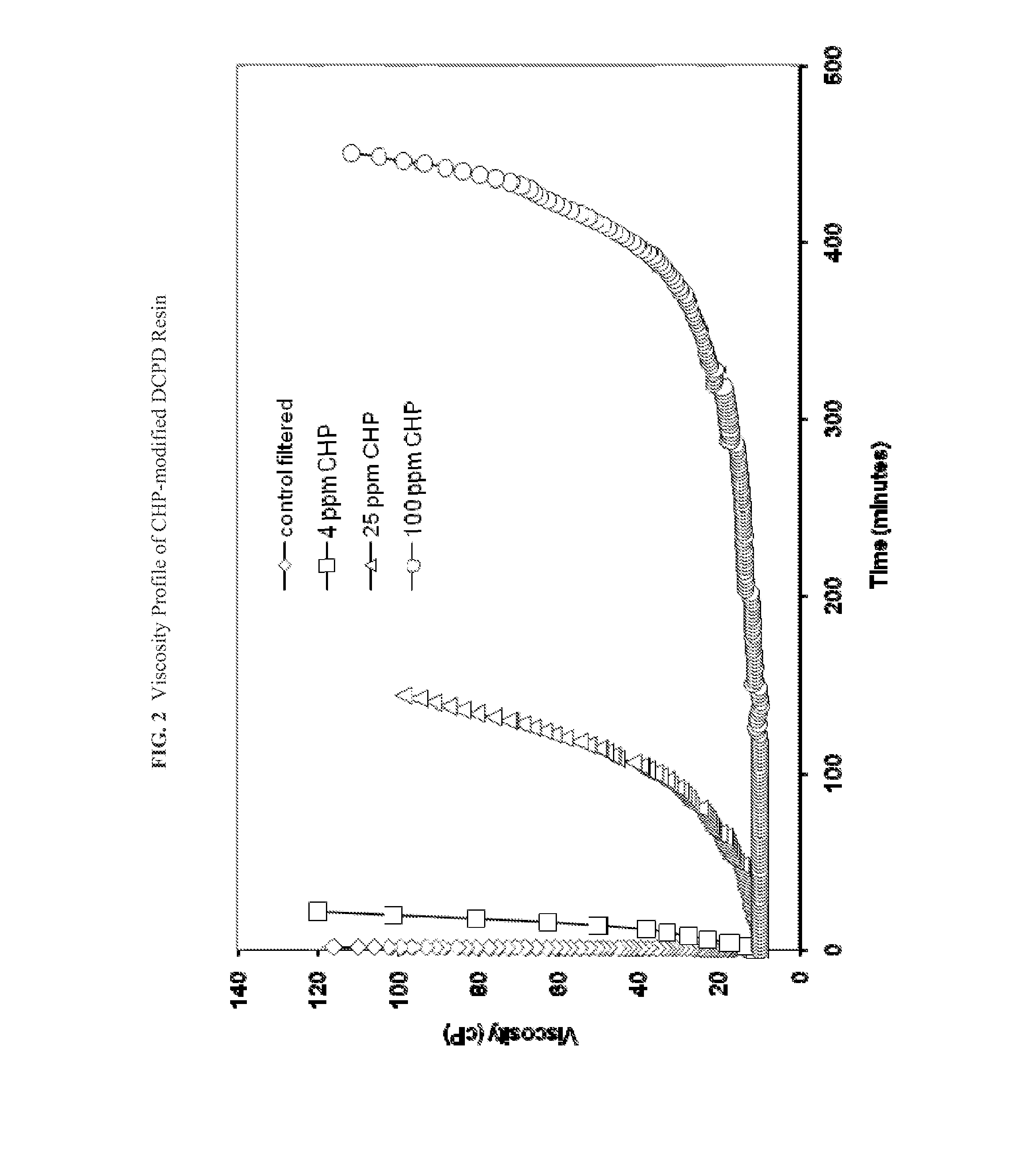Adhesion promoters and gel-modifiers for olefin metathesis compositions
a technology of olefin metathesis and promoter, which is applied in the direction of synthetic resin layered products, other chemical processes, coatings, etc., can solve the problems of reducing the mechanical properties or visual appearance of manufactured parts, reducing the mechanical properties of the manufactured part, and many widely used commercial silanes that do not give optimal properties of romp polymers. achieve the effect of improving the ability to control the romp reaction, improving the adhesion of the metathesis cataly
- Summary
- Abstract
- Description
- Claims
- Application Information
AI Technical Summary
Benefits of technology
Problems solved by technology
Method used
Image
Examples
examples
Materials and Methods
[0245]All glassware was oven dried and reactions were performed under ambient conditions unless otherwise noted. All solvents and reagents were purchased from commercial suppliers and used as received unless otherwise noted.
[0246]Dicyclopentadiene (Ultrene® 99) (DCPD) was obtained from Cymetech Corporation. A modified DCPD base resin containing 20-25% tricyclopentadiene (and small amounts of higher cyclopentadiene homologs) was prepared by heat treatment of Ultrene® 99 as generally described in U.S. Pat. No. 4,899,005.
[0247]Solid MDI (4,4′-methylene diphenyl diisocyanate) was used as received from Sigma Aldrich (98% purity). Liquid MDI (50 / 50 mixture of 4,4′-MDI and 2,4′-MDI) was used as received from Bayer Material Science (Mondur® ML). Hexamethylenediisocyanurate (hexamethylenediisocyanatetrimer, HDIt, CAS#3779-63-3) was used as received from Bayer Material Science (Desmodur® N3300A). HDI (hexamethylenediisocyanate or diisocyanatohexane, CAS#822-06-0) was used...
examples 1 (
Examples 1(a-1)-4(a-1)
Roving Composites Prepared with Isocyanate Adhesion Agents
[0259]Resin was prepared using the modified DCPD (containing 20-25% tricyclopentadiene), 20 ppm CHP, 2 phr Ethanox® 4702 antioxidant, and 2 phr of the appropriate isocyanate adhesion promoter. The resin was catalyzed by the addition of C827 (monomer to catalyst ratio 30,000:1) in a suspension of mineral oil. Roving wrap composites based on glass roving (Examples 1(a-1) PPG2002; Examples 2(a-1) PPG2026; Examples 3(a-1) Ahlstrom R338-2400; Examples 4(a-1) Star ROV®-086) were saturated with the catalyzed dicyclopentadiene resin and layered into a ¼″×6″ bar mold under moderate tension. The bar mold was compressed to achieve approximately 50% fiber volume at ⅛″ thickness, and held with C-clamps during the oven cure process. Roving wrap composites were heated from room temperature to 120° C. at 1° C. / min, and held at 120° C. for two hours. The ILSS of the resulting composites were measured (Table 1). Samples w...
examples 5 (
Examples 5(a-h)-8(a-h)
Roving Composites Prepared with Isocyanate Adhesion Agents and HENB
[0260]Resin was prepared using the modified DCPD (containing 20-25% tricyclopentadiene), 20 ppm CHP, 2 phr Ethanox® 4702 antioxidant, 2 phr of the appropriate diisocyanate adhesion promoter, and 2 phr of HENB. The resin was catalyzed by the addition of C827 (monomer to catalyst ratio 30,000:1) in a suspension of mineral oil. Roving wrap composites based on glass rovings (Examples 5(a-h) PPG2002; Examples 6(a-h) PPG2026; Examples 7(a-h) Ahlstrom R338-2400; Examples 8(a-h) Star ROV®-086) were prepared as described in Example 1. The ILSS of the resulting composites were measured (Table 2). In most cases the addition of HENB further improved the mechanical properties of the resulting composites compared with those using the diisocyanate adhesion promoter alone (1b-1h, 2b-2h, 3b-3h, and 4b-4h from Table 1). HENB alone did not improve adhesion (5h-8h).
TABLE 2ILSS for Roving Composites Prepared with Is...
PUM
| Property | Measurement | Unit |
|---|---|---|
| Adhesion strength | aaaaa | aaaaa |
Abstract
Description
Claims
Application Information
 Login to View More
Login to View More - R&D
- Intellectual Property
- Life Sciences
- Materials
- Tech Scout
- Unparalleled Data Quality
- Higher Quality Content
- 60% Fewer Hallucinations
Browse by: Latest US Patents, China's latest patents, Technical Efficacy Thesaurus, Application Domain, Technology Topic, Popular Technical Reports.
© 2025 PatSnap. All rights reserved.Legal|Privacy policy|Modern Slavery Act Transparency Statement|Sitemap|About US| Contact US: help@patsnap.com



